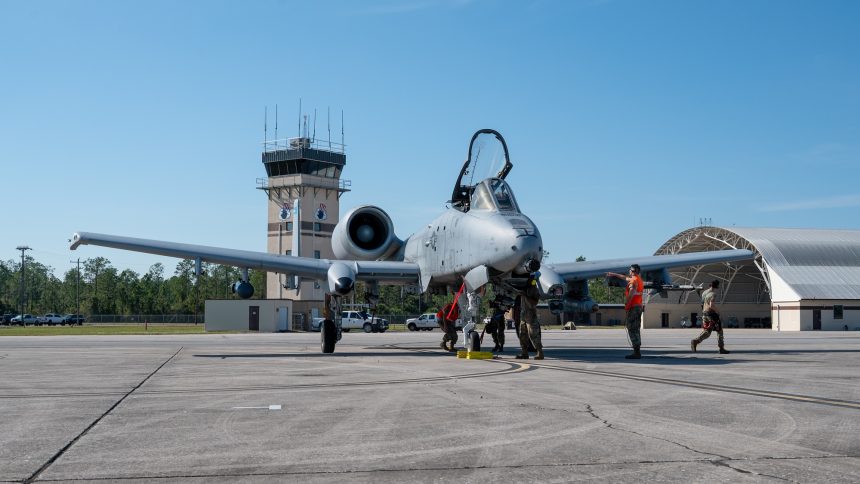Mosaic Tiger was used as a distributed operations stress test to simulate how the unit would operate in a future high-end conflict.
Exercise Mosaic Tiger 26-1, held Nov. 12–21, 2025 across multiple locations in Florida and Georgia, offered one of the clearest looks yet at how the U.S. Air Force expects its units to operate under a future high-end conflict. The event brought different specialties from Moody AFB’s 23rd Wing for a ten-day evaluation of their ability to generate, defend and sustain airpower while dispersed, resource-limited and, in some cases, cut off from higher headquarters.
The Air Force’s Agile Combat Employment (ACE) concept has been applied across the exercise, with complex and realistic scenarios. As the service prepares for conflict environments where airbases, satellite links, and long-range logistics chains are targeted early and often, ACE emphasizes small, mobile, multi-capable teams capable of conducting combat operations from locations with minimal infrastructure.
“This is more than an exercise; it is a demonstration of how we project combat power anytime, anywhere,” said Col. Sean Hall, 23d WG commander. “Despite disrupted communications, our Airmen are laser-focused on protection, sustainment and delivering airpower in support of the combatant commander’s intent.
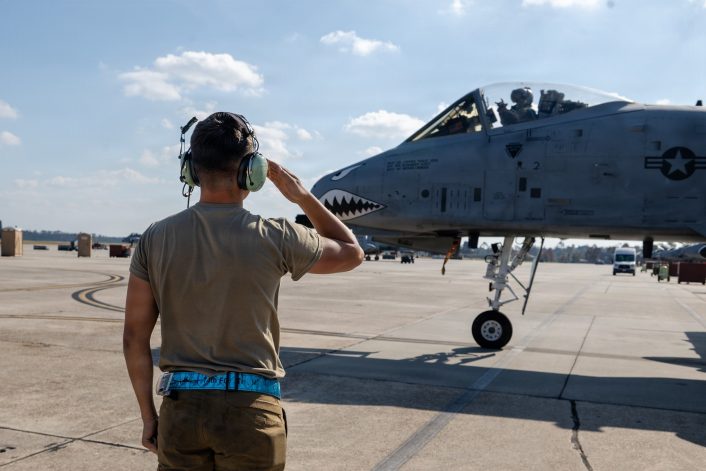
Units like the 23rd Wing are being asked to rehearse how they would fight without the redundancy, predictability and infrastructure of traditional main operating bases. Mosaic Tiger 26-1 pushed these ideas further than previous iterations, introducing harsher logistics constraints, deeper communications degradation, a more aggressive opposing force (OPFOR), and more realistic integration of rescue and attack missions.
In fact, this year’s iteration fused distributed airpower generation, personnel recovery, base defense, mission autonomy, maintenance improvisation, and multi-capable Airman (MCA) employment into a single, cohesive exercise environment. This made the exercise notably more demanding than earlier iterations.
Combat Air Base Squadron
The launch of the exercise was preceded by the activation of the 23rd Combat Air Base Squadron (CABS) during a ceremony on Sept. 15, 2025. The unit was at the center of Mosaic Tiger 26-1.
“The Combat Air Base Squadron represents a complete shift in how the Air Force prepares for deployments,” said Lt. Col. Justin L. May, 23rd CABS commander. “Instead of piecemeal teams thrown together, this squadron has trained together for the better part of a year, building trust and refining processes so we can operate at high tempo from day one.”
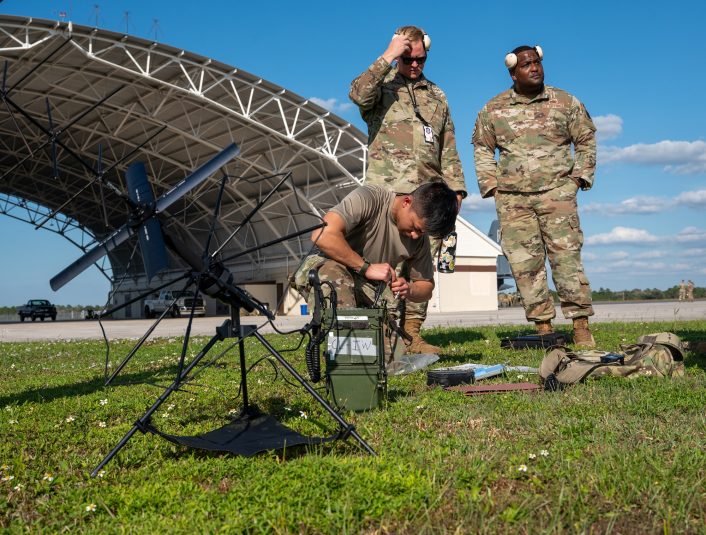
In fact, the CABS concept evolved from expeditionary air base squadrons that supported contingency operations over the past two decades. According to the service, the 23rd CABS consolidates more than 60 Air Force specialty codes into one cohesive unit responsible for base operations and sustainment in deployed environments, directly supporting the new deployable combat wing model.
“Every Airman in the squadron is tackling tasks that normally wouldn’t fall in their wheelhouse,” said May at the start of the exercise. “Whether it’s building plans, developing physical training programs or creating professional development initiatives focused on leadership and mission command. It is an all-hands-on-deck effort, and no single person can take credit for everything that CABS has and will accomplish.”
The service further said that Moody’s diverse mission set made it a natural fit to pioneer this effort, thanks to the 23rd Wing’s attack and rescue missions, the 93rd Air Ground Operations Wing and the 820th Base Defense Group all stationed on base.
ICTs & Distributed Ops
As part of the exercise, Moody Airmen were split into multiple locations: the main operating base, the forward operating site and a contingency location. Personnel loaded mission-essential cargo and boarded an HC-130J Combat King II to simulate a deployment to a contingency location at the Avon Park Air Force Range from Nov. 18 to 20.
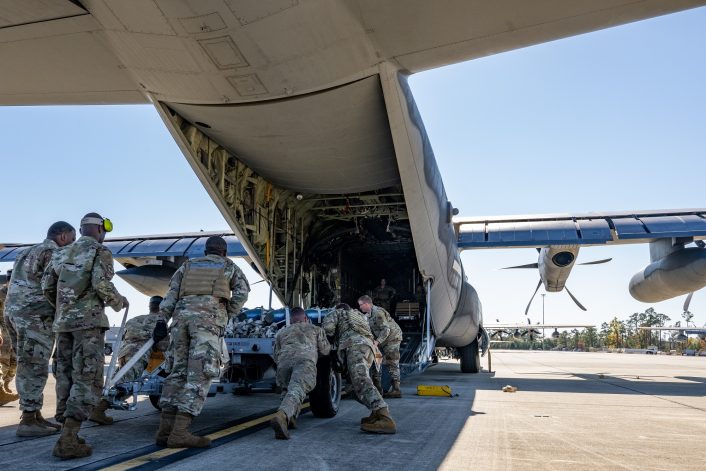
The simulated contingency location was designed to stress the principles of ACE. A small, 20-member detachment arrived there, securing the airfield, standing up communication links and preparing to work on aircraft with no guaranteed resupply.
Making the conditions more challenging, multiple Alarm Red instances forced the personnel to work with full combat gear and heightened alert status. The team performed Integrated Combat Turns (ICTs), rearming and refueling aircraft simultaneously, under conditions meant to mimic the compressed timelines and limited resources of a forward island outpost.
“ICTs let us fuel and rearm the jet at the same time so it can get back in the air faster,” said Staff Sgt. Ryan Nisse, 23rd Logistics Readiness Squadron fuels specialist. “There’s no waiting between steps. It keeps the mission moving. Working at Avon Park, or any contingency location, you understand that what you have is what you have. You have to adjust based on the supplies and equipment you’ve got on hand.”
ICTs are a foundational part of ACE as, regenerating aircraft faster and with smaller teams, they reduce the time a jet sits vulnerable on the ground. This has obvious relevance for operations in any theater where runways are scarce and adversaries can rapidly target predictable patterns.
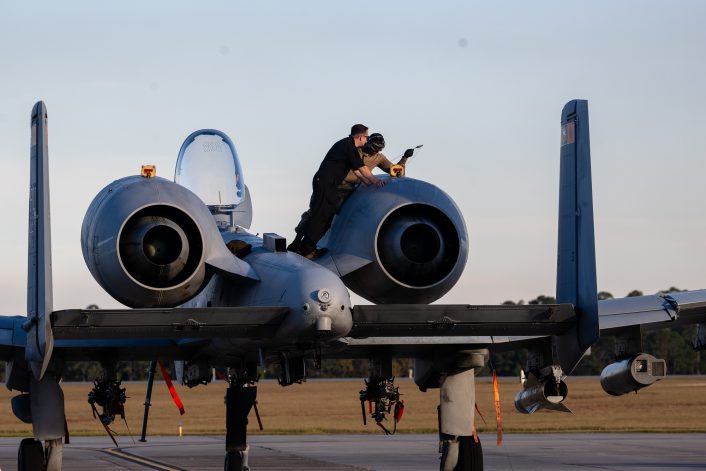
Base Defense & Ground Patrols
Simulating deployed conditions, the force protection was an integral part of the exercise. Multiple events tested the response of personnel to preserve the security on the exercise locations.
The Security Forces Airmen from the 23d Combat Air Base Squadron conducted patrols in the exercise’s operating area. In their core role, SF Airmen were responsible for establishing and maintaining cordons, detaining intruders, monitoring for unmanned aerial systems and identifying potential improvised explosive devices.
At Tyndall AFB, the 822nd Base Defense Squadron (BDS) acted as a dedicated OPFOR, and conducted a complex, multipronged attack on the A-Staff leadership and command and control node at the Combat Support Training Range. This was the culmination of multiple days of probing and testing perimeter defenses by using both drones and physical surveillance, in order to get a good idea of reaction times and security posture.
At nightfall, an enemy drone operator piloted the device in a pattern over the command tent, intending to distract Airmen from the real threat. In fact, the main attack force was sneaking through the woods armed with automatic weapons and explosives, ready to attack from multiple angles, hidden inside foliage or behind cover.
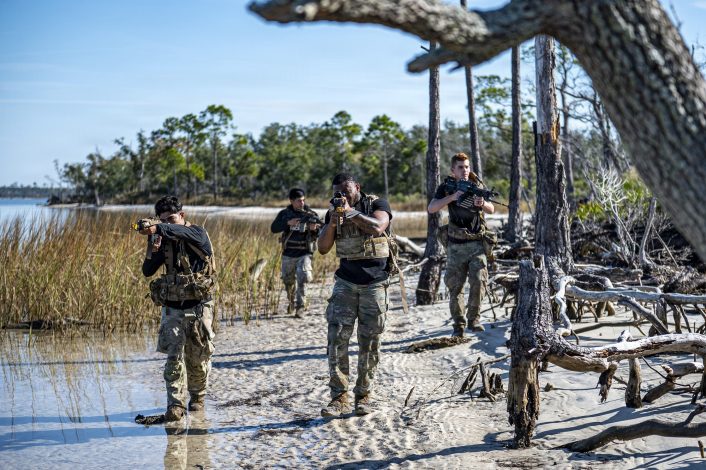
“From the outside looking in, it might look chaotic, but it’s finely choreographed orchestra of speed and violence,” said Chief Master Sgt. Patrick Meade, 23d CABS senior enlisted leader. “What happened here proves that our CABS concept is working. It doesn’t matter the job of the Airmen, when it comes to installation defense, these CABS Airmen are going to win.”
The small footprint of security forces members at the base was supported from the dozens of CABS Airmen recently trained on base-defense tasks. Complicating the reaction, Lt. Col. May, 23d CABS commander, was took out of the fight by a simulated stray bullet, leaving the team to finish the engagement without directions and relying on their training.
“We actually had electricians flank the enemy using a technique you generally don’t see outside of security forces,” Meade said. “It was amazing to see that the training from Silver Flag brought everything to a culmination point, and we were able to execute and provide installation security using the mission-ready Airmen concept and mission command from the top to the bottom. Airmen 1st classes holding sectors was just phenomenal to watch.”
This base defense was not confined to a single event. Other events also included simulated missile launches, drone incursions, unexploded ordnance discoveries, perimeter breaches and, last but not least, gas contaminations, reacting to a 55-gallon drum that was thrown from the back of a truck inside the MOB, spilling a chemical agent – the mustard gas.

An “Alarm Red, MOPP 4” condition was called, with MOB personnel continuing to work on directing airpower in the simulated war effort, while security forces established a cordon and a hazardous material team arrived and began inspecting and determining the chemical makeup.
The ground picture was the clearest demonstration of ACE’s reality: base defense is no longer the exclusive domain of security forces, it is part of the distributed mission set every Airman must support. This ensures the mission can keep going without interruptions and combat air power is generated seamlessly.
Mission Generation & Maintenance Challenges
The maintenance scenarios showed how the ACE concept stresses not only hardware, but also the ingenuity of the crews responsible for keeping it flying. Maintainers from the 74th and 75th Fighter Generation Squadrons were intentionally spread across multiple locations, each told to operate as if resupply was uncertain and communications intermittent.
This forced them to adopt a survival mindset when handling tools, parts and consumables. One of the clearest logistical constraints involved oil management.
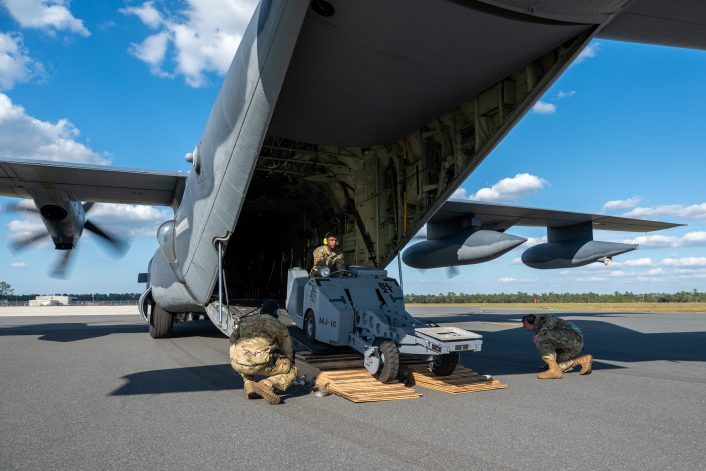
“Being responsible for what supplies we do have on site all leads back to ensuring that we stay accountable and utilize all resources available,” said Staff Sgt. William Flores, 75th FGS crew chief. “Take oil for example, if we’re burning too much oil we may want to swap jets so we’re not using more oil then we can supply, and by doing that, we can maintain air operations.”
These constraints were built into the exercise to rehearse potential real-world challenges. In a Pacific scenario where a distributed element might lose resupply for days, every consumable becomes a mission-critical asset.
The decision to even re-use certain components – something never done under normal conditions – was part of this forcing function. While the Air Force did not specify which components were re-used or life-extended, the practice was explicitly meant to replicate the improvisation expected during prolonged isolation.
The maintainers’ adaptability was highlighted by leadership throughout the event. This improvisational, degraded-resource experience represents the real maturation of ACE within maintenance work, reshaped around flexibility, cross-training and a willingness to execute without ideal conditions.

C2 Degradation & Autonomy
One of the most important dimensions of Mosaic Tiger 26-1 was its emphasis on Command and Control (C2) degradation. For many Airmen, this was their first exposure to operating for extended periods without reliable guidance from higher headquarters.
Lt. Col. Nathan Frey, director of operations for the 74th Fighter Squadron, noted that units typically operate from a 72-hour Air Tasking Order (ATO). In a degraded environment, once those 72 hours expire, sorties cannot rely on updated tasking.
If communication blackout persists, units transition to a different planning logic, instead relying on the commander’s last known intent, pre-briefed mission sets, and direct coordination with adjacent units. Here, the 23rd Wing’s Mission Generation Force Element (MGFE) played a central role.
According to its commander, Lt. Col. David Pool, the MGFE acted as a connective node between dispersed units, sharing planning data and maintaining limited synchronization when higher higher-level C2 went down. This way, the unit can continue delivering combat-ready airpower even if the communication space becomes contested.
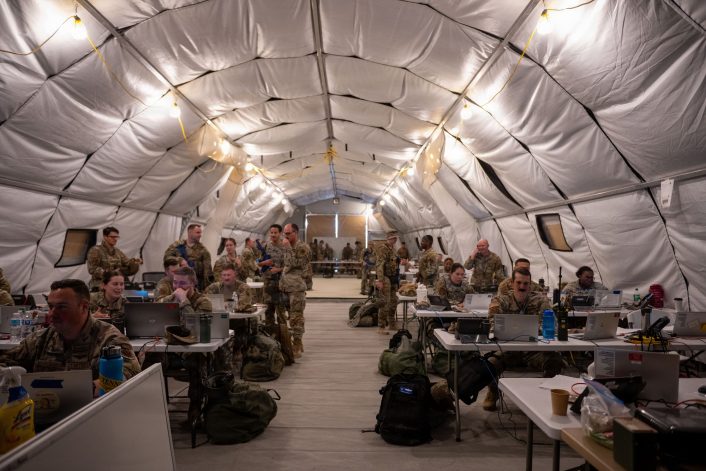
This is a critical feature of ACE that often receives less attention than logistic dispersal. The ability for wings or subordinate elements to sustain operations autonomously – without daily ATO updates, real-time intelligence, communications with higher commands – represents a major shift in how the Air Force views tactical flexibility in a high-end fight.
Where previous exercises simply included temporary communications outages, Mosaic Tiger 26-1 treated C2 degradation as a primary scenario driver. In a modern contested environment, where kinetic strikes and electronic warfare would take out in the initial phases also communications systems and C2, Airmen need to be prepared to face unexpected tasking gaps and continue generating combat power.
Personnel Recovery
The rescue community played a substantial role in Mosaic Tiger 26-1 through Exercise PR Pulse, a long-range, open-ocean personnel recovery scenario executed on Nov. 19 in the Gulf of America. The 347th Rescue Group (RQG) trained with HH-60W Jolly Green II crews, HC-130J Combat King II crews and Guardian Angel teams to recover downed aircrew from rafts while a complex, multi-domain air operation unfolded overhead.
“Mosaic Tiger provides a robust threat environment and a plausible road-to-war that helps aircrew cage their mind to the challenges of combat, including an enemy that wants to shoot you down, that forces detailed mission planning, integration with other U.S. platforms and capabilities, and adherence to our tactics,” said Lt. Col. Zachary Martin, 347th Operation Support Squadron commander. “Incomplete information requires crews to plan and execute contingencies and tactical challenges force crews to make hard decisions and tradeoffs.”

“Within MT 26-1, PR Pulse specifically adds the necessary components for the 38th, 41st and 71st Rescue Squadrons to train towards long-range, contested, and open-ocean personnel recovery (PR), including planning products, mission injects via a variety of data links, and a tailored threat lay down that drives our aircrew to integrate,” he continued.
Making things more realistic, the units practiced C2, sustainment and support functions by treating the group like a deployed Personnel Recovery Task Force (PRTF), complete with status updates, mission information, and aircraft reporting used downrange. This hands-on approach lets the 347th RQG operate as a deployed PRTF, integrating aircraft, personnel and intelligence in realistic, contested conditions.
“For the exercise, we are training the Rescue Triad (HH-60W Jolly Green II, Guardian Angel, and HC-130J Combat King II) in how we would fight by conducting long-range contested PR into the open ocean while an intensive air operation is going on above us,” Martin said. “The 347th OSS includes an intelligence and a weapons and tactics flight who enabled PR Pulse by building an exercise scenario that includes plausible road-to-war with a possible adversary, a robust air, maritime and ground threat laydown that reflects adversary doctrine, tactics, weapons systems, Air Tasking Orders, airspace constructs, and realistic missions for the 41st, 71st and 38th RQSs to then train against.”

